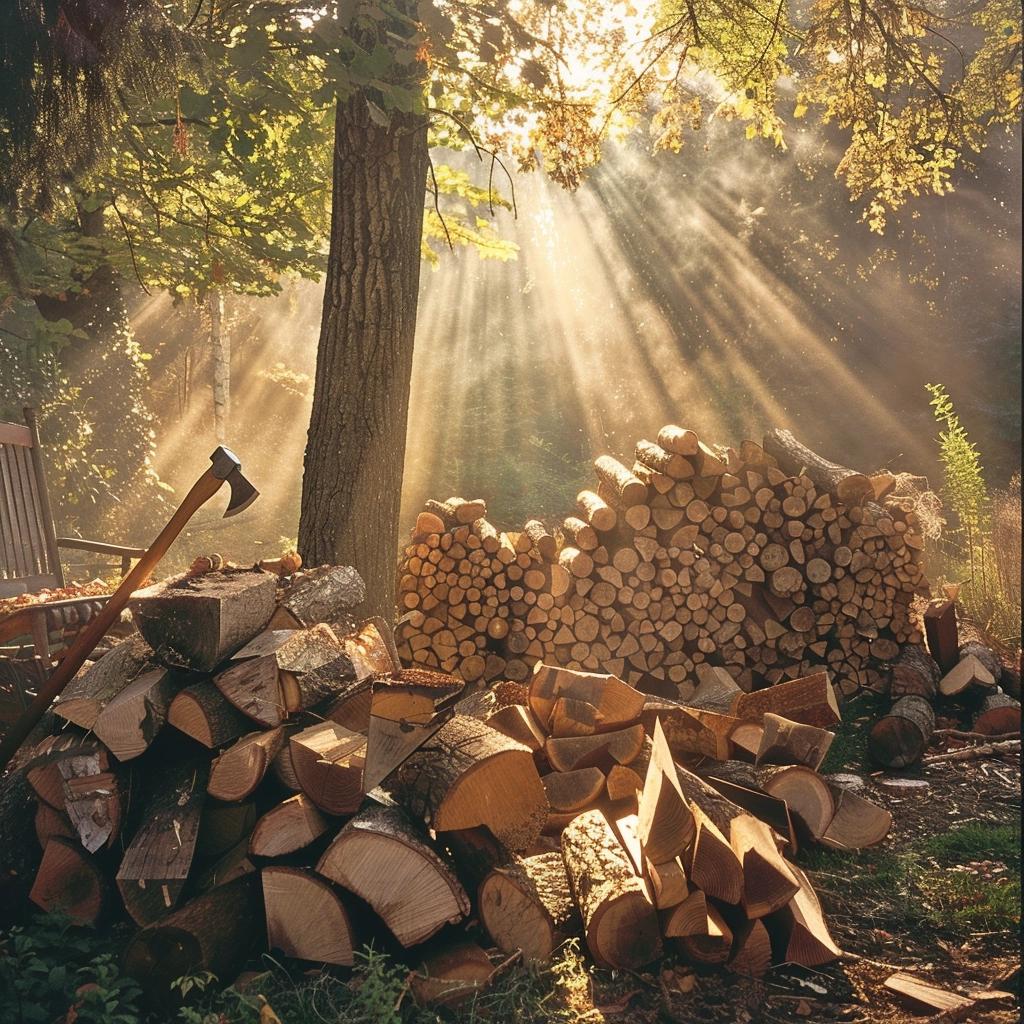Hey there, fellow woodchopper! If you’re like me, there’s nothing quite like the satisfying thud of an axe splitting a log cleanly in two. But let me tell you, having the right splitting axe can make all the difference between a frustrating day of struggling and a smooth, efficient firewood processing session.
Introduction: The Importance of Choosing the Right Splitting Axe
Listen up, my lumberjack friends. When it comes to splitting firewood, having the perfect tool for the job is crucial. A well-chosen splitting axe can turn a daunting task into a rhythmic, almost meditative experience. But settle for a subpar axe, and you’ll quickly find yourself battling with stubborn logs, risking injury, and wasting precious time and energy.
Understanding the Different Types of Splitting Axes

Before we dive into the nitty-gritty of choosing the right splitting axe, let’s take a moment to appreciate the diversity of these mighty tools. There are two main types to consider: the wedge-style axe and the maul-style axe.
- Wedge-style axes: These bad boys are characterized by their sleek, tapered blade designed to slice through wood like a hot knife through butter. They’re the go-to choice for splitting smaller logs and require a bit more finesse and technique.
- Maul-style axes: On the other hand, maul-style axes pack a serious punch with their hefty, blunt heads. These brutes are built for brute force, making them ideal for tackling larger, knotty logs that might laugh in the face of a mere wedge.
Factors to Consider When Selecting a Splitting Axe
Now, let’s get down to the nitty-gritty of choosing the perfect splitting axe for your needs. Here are a few key factors to keep in mind:
- Log size: As we’ve established, wedge-style axes excel at splitting smaller logs, while mauls are better suited for larger, more stubborn pieces of wood.
- Axe weight: Heavier axes pack more splitting power, but they can also be tiring to swing for extended periods. Finding the sweet spot between power and manageability is key.
- Handle length: A longer handle can generate more swing force, but it can also be unwieldy, especially in tight spaces. Consider your splitting environment and personal preferences.
- Durability: You’ll want an axe that can withstand the rigors of splitting without compromising its integrity. Look for high-quality materials and construction.
Comparing Efficiency: Wedge-Style vs. Maul-Style Axes

Now, let’s settle the age-old debate: which axe reigns supreme when it comes to efficiency? Well, my friends, the answer isn’t so cut and dry (pun fully intended).
Wedge-style axes are undoubtedly the nimble ninjas of the splitting world. With their sharp, tapered blades, they can slice through smaller logs with surgical precision, minimizing the effort required. However, when faced with larger, gnarlier pieces of wood, even the mightiest wedge can struggle.
Enter the maul-style axe, the heavyweight champion of the splitting game. These brutes rely on sheer force to pulverize even the most stubborn logs. While they may require a bit more muscle power, a well-struck maul can make short work of logs that would leave a wedge-style axe quivering in its boots.
At the end of the day, efficiency often boils down to personal preference and the specific task at hand. Some prefer the finesse and control of a wedge, while others revel in the raw power of a maul. Why not try both and see which style suits your splitting swagger?
Safety Considerations: Avoiding Injury When Splitting Firewood

Alright, let’s get serious for a moment, folks. As fun and satisfying as splitting firewood can be, safety should always be the top priority. These axes are no joke, and a moment of carelessness can lead to some seriously gnarly injuries.
- Proper protective gear: Invest in a sturdy pair of gloves, eye protection, and steel-toed boots. Trust me, you don’t want a rogue log or axe head taking a chunk out of your precious digits.
- Clear workspace: Make sure your splitting area is free of tripping hazards, loose debris, and any other potential obstacles that could cause you to lose your balance or swing wildly.
- Proper technique: Learn the correct way to grip the axe, position your body, and swing with control. Brute force alone won’t cut it (pun intended, once again).
- Stay alert: Splitting firewood requires focus and concentration. Avoid distractions and never split while under the influence of, well, anything that could impair your judgment or coordination.
Remember, my friends, a little caution goes a long way in ensuring that your woodchopping adventures remain safe and enjoyable.
Maintaining and Caring for Your Splitting Axe
Alright, you’ve chosen the perfect splitting axe, and you’re ready to tackle that mountain of logs with gusto. But hold on a minute, my dear wood-whackers! Proper maintenance is key to ensuring your trusty axe stays in tip-top shape.
- Keep it sharp: A dull axe is not only inefficient but also potentially dangerous. Regularly sharpen the blade or head to maintain that razor-sharp edge.
- Clean and oil: After a long day of splitting, give your axe a good wipe-down and apply a thin coat of oil to prevent rust and keep the wood handle in pristine condition.
- Replace worn parts: Over time, even the toughest axe can show signs of wear and tear. Don’t hesitate to replace a cracked handle or a chipped blade before they become a safety hazard.
- Proper storage: When not in use, store your axe in a dry, secure place, away from moisture and potential hazards. You don’t want your prized possession to rust or end up as a dangerous plaything for curious critters.
Treat your splitting axe with the respect it deserves, and it will reward you with years of faithful service, turning even the most daunting piles of logs into neat stacks of firewood.
Conclusion

Well, my fellow woodchoppers, we’ve covered a lot of ground today. From the different types of splitting axes to safety considerations and maintenance tips, you’re now armed with the knowledge to conquer any log that dares stand in your way.
Remember, choosing the right splitting axe is just the first step on your journey to firewood mastery. Embrace the rhythm, respect the process, and above all, have fun with it. After all, there’s something deeply satisfying about turning a towering stack of logs into a neat, orderly pile of firewood, ready to fuel your cozy winter nights.
So, what are you waiting for? Grab your trusty axe, lace up those steel-toed boots, and let the splitting commence! Just don’t forget to take a break every now and then to admire your handiwork and maybe toss a log or two onto the fire – you’ve earned it, my friend.







